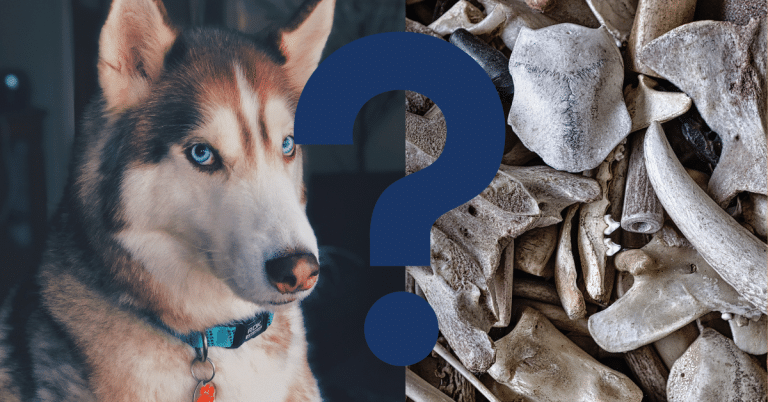Can Dogs Eat Candy? A Vet’s Opinion

Candy is a delicious delicacy that is usually manufactured from sugar or chocolate. It is frequently flavored and has many different shapes. But can you feed candy to your dog?
No, dogs shouldn’t consume candy. The majority of candies, including chocolate, are toxic for dogs. Theobromine, a substance found in chocolate, can make dogs throw up, have diarrhea, breathe quickly, beat more quickly, have seizures, or even pass away. Other candy ingredients like sugar alternatives like xylitol may also harm dogs. To avoid any potential harm or illness, keeping all candies, chocolates, and sweets out of reach of dogs is preferable. Give them dog-friendly snacks and treats instead.
Benefits Of Candy For Dogs
It’s crucial to note that, even though candy is not advised for dogs owing to potential health hazards, dogs have no discernible advantages from eating sweets. Candy is not designed to suit the nutritional demands of dogs, which differ from humans in this regard. In actuality, candy can be unhealthy for a dog’s health. Candy is often heavy in sugar, raising a dog’s risk of developing diabetes, obesity, and dental problems. Additionally, some candies include artificial sweeteners like xylitol, which is highly toxic to dogs and can result in severe problems like liver failure.
Instead of candy, it’s recommended to give dogs a balanced diet composed of premium dog food and suitable dog treats created to meet their dietary requirements. These snacks may promote tooth health, supply extra nutrients, or meet particular dietary needs, among other advantages. A veterinarian should always be consulted for advice on the best treats for your dog.

How To Safely Give Candy To Dogs
It’s crucial to remember that candy is neither a need nor a suggested component of a dog’s diet. There are other solutions if you’re searching for a secure way to offer your dog treats resembling candy. Following are some suggestions:
Dog-Specific Goodies
Select canine-specific goodies. These snacks are frequently offered in a variety of flavors and forms that can mimic candy and are designed to suit their nutritional demands.
Healthier Alternatives
Look for natural snacks manufactured from high-quality ingredients if you want a healthy option. Numerous brands sell sweets without artificial additives, fewer ingredients, and no added sugar.
Portion Control
The key is moderation. Even when giving dog-specific goodies, it’s crucial to do so in moderation. Consuming too many treats might result in weight gain and other health problems. For portion suggestions based on your dog’s size and dietary needs, follow the instructions on the container or speak with your veterinarian.
Monitor For Adverse Reactions
Always keep an eye on your dog when feeding them treats. It prevents them from choking or experiencing any adverse effects. It also enables you to monitor how many treats they consume and prevent overindulgence.
Treat Dispensing Toys
Treat-dispensing toys should be used since they help to reduce treat consumption by stimulating the mind. Dogs who play with these toys must work for their rewards, keeping them entertained and delaying quick digestion.
Make Your Treats At Home
Consider making your dog treats with materials that are suitable for dogs. Many recipes call for ingredients like peanut butter, pumpkin, carrots, or sweet potatoes online. You can control the contents and omit any potentially dangerous ones in this manner.
See A Veterinarian
See a veterinarian if you have any questions or concerns regarding whether treats are appropriate for your dog. They can offer tailored guidance depending on your dog’s dietary needs and medical issues.
Remember that feeding your dog a balanced food that suits their individual needs should be your main priority. Treats shouldn’t be used as a substitute for regular meals but rather as an occasional reward. Always put your dog’s health and welfare ahead of all else.
Will Candy Make A Dog Sick?
Yes, sweets can make a dog ill and lead to several medical problems. Following are some illnesses or problems that could develop if dogs eat candy:
Chocolate Toxicity
Theobromine, which is present in chocolate, is harmful to dogs. Depending on the type and quantity of chocolate consumed, dogs may exhibit symptoms like vomiting, diarrhea, an elevated heart rate, tremors, restlessness, seizures, or even death.
Xylitol Poisoning
Many candy and sugar-free goods contain xylitol, an artificial sweetener. It can cause a quick insulin release and a hazardous drop in blood sugar levels (hypoglycemia), which are highly poisonous to dogs. Vomiting, lack of coordination, convulsions, and liver failure are just a few symptoms.
Sugar Rush
Candy is heavy in sugar, and consuming too much of it can cause obesity, dental issues (including tooth decay and gum disease), and an elevated risk of canine diabetes.
Gastrointestinal Discomfort
Many candies, particularly those with intense flavors or plenty of sugar, can cause a dog’s digestive system uncomfortable. It may result in nausea, vomiting, diarrhea, upset stomach, and loss of appetite.
Choking Risk
Some candies can be dangerous for dogs to eat because they are hard, sticky, or contain little pieces. Dogs might eat the candy whole or get it stuck in their throats, which could cause an obstruction or cause them to choke.
Pancreatitis
Some candies, especially ones with a lot of fat or oil, might make dogs get pancreatitis. It is a pancreatic inflammation that can cause symptoms like nausea, vomiting, loss of appetite, and sedentary behavior.
Candy and other sweets must be kept out of your dog’s reach if you want to avoid these possible illnesses and problems. To protect their health and well-being, give them dog-specific treats that are safe and acceptable. Contact your veterinarian immediately for directions and help if you think your dog may have consumed candy or any other hazardous substance.
Can dogs eat candy variations?
Dogs shouldn’t eat any confectionery, period. Essential candy elements like sugar and chocolate are unhealthy for dogs and can harm their health. Dogs’ digestive processes and nutritional requirements differ from those of humans, and many types of confectionery contain substances that can be hazardous to them.
For instance, theobromine is a substance found in chocolate that can have significant adverse effects on dogs, such as vomiting, diarrhea, accelerated breathing, elevated heart rate, seizures, and even death. The artificial sweetener xylitol, which is highly poisonous to dogs and can cause a sharp drop in blood sugar levels and liver failure, may be included in other candy varieties.

Vet’s Summary
In conclusion, dogs shouldn’t be offered candy-like treats because they are toxic for dogs. Candy contains poisonous substances to dogs and can cause various health problems, including chocolate toxicity, xylitol poisoning, gastrointestinal discomfort, obesity, and dental disorders. These substances include sugar, chocolate, and artificial sweeteners. By giving them dog-specific treats that fit their needs and seeking a veterinarian’s advice on appropriate treats, it is crucial to prioritize a dog’s nutritional needs.
Additionally, it can be advantageous for dog owners to consider adding probiotic pills to their dog’s diet rather than candy or treats. Probiotics are living microorganisms that help your health by fostering a balanced population of gut bacteria. In dogs, probiotics can enhance gut health, boost the immune system, and promote digestion. To ensure supplements are suitable for your dog and determine the correct dosage, you must speak with a veterinarian before introducing any. The vet can offer trustworthy probiotic supplements and advise you on how to add them to your dog’s diet securely and efficiently.
Videos To Watch
If you are wondering what related foods are good to give your dog, watch this:
And if you want to know what a dog can NOT eat, watch this:






